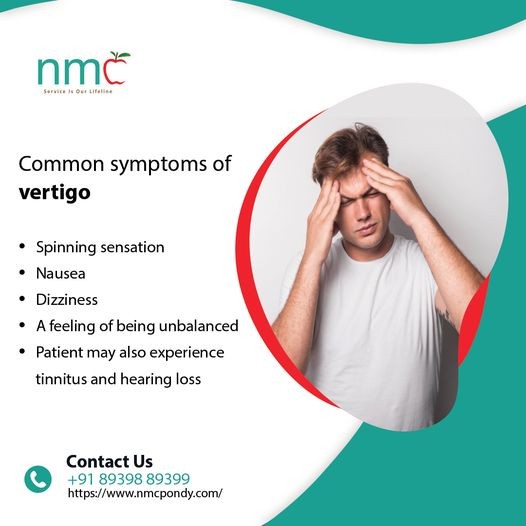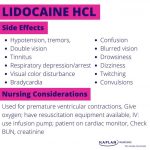
Contents
What Triggers Vertigo?
Vertigo is the sensation of spinning, rotating, or rocking, even when a person is still. Some patients use the term interchangeably with dizziness to describe various symptoms, like balance disorders, difficulty walking, motion sickness, or lightheadedness. However, health care professionals consider vertigo to be a specific complaint involving the inner ear and the brain.
To understand vertigo, it’s helpful to know the anatomy of the ear. Sound waves travel through the outer ear canal until they reach the eardrum. These sound waves then turn into vibrations that transmit to the cochlea through three small bones – the incus, malleus, and stapes. The cochlea sends signals to the vestibular nerve, which the brain interprets as sound.
The inner ear does not play a role in hearing. It consists of three semicircular canals lined with nerve cells that act like a gyroscope for the body. Along with hair cells in the utricle and saccule and otoliths that trigger the hair cells in response to movement, these semicircular canals form the vestibular system. This system provides instant feedback to the brain, along with vision and proprioception receptors, about our position in space.
Children often induce a sense of vertigo by spinning or riding a merry-go-round or rollercoaster. This type of vertigo lasts only a short while before disappearing. Spontaneous or injury/illness-related vertigo, on the other hand, can last for hours or days.
What are the Signs and Symptoms of Vertigo?
Symptoms of vertigo include a sense of spinning, loss of balance, whirling, or loss of balance. These symptoms can occur even when a person is still. Movements like rolling over in bed can worsen these symptoms. Many people experience nausea or vomiting along with vertigo.
When using the term dizziness, medical professionals distinguish between a spinning sensation (vertigo) and other symptoms like lightheadedness, fainting, or near-fainting.
During physical examinations, abnormal eye movements (nystagmus) are often observed. Health care professionals may provoke these symptoms with abrupt body or head movements to look for nystagmus.
Medical professionals need to determine whether inner ear problems or issues with the brain’s balance centers (cerebellum) cause vertigo. They may have the patient perform coordination tasks to evaluate brain function and check for balance problems.
QUESTION
What Causes Vertigo?
Vertigo has several causes. It can be categorized as peripheral or central. Peripheral vertigo stems from problems within the inner ear, while central vertigo originates in the brain or spinal cord.
4 Peripheral causes:
- Spontaneous inflammation of the inner ear structures. Irritation to the hair cells within the semicircular canals can result from the displacement of small crystals or stones typically found in the inner ear, causing vertigo (benign paroxysmal positional vertigo or BPPV).
- Vestibular neuritis or labyrinthitis caused by vestibular nerve infection.
- Fluid buildup in the inner ear or endolymphatic system leads to Ménière’s disease, which also involves hearing loss and tinnitus.
- Acoustic neuromas, tumors of the vestibular nerve, might present with these three symptoms.
5 Central causes:
- Vertigo can be associated with concussion or traumatic brain injury.
- Strokes can cause vertigo and loss of coordination.
- Multiple sclerosis
- Tumors of the brain and spinal cord
- Some patients with vestibular migraine, a type of migraine headache, may experience vertigo.
What are the Risk Factors for Vertigo?
Head injuries increase the risk of developing vertigo. Ear infections can impact the vestibular nerve and lead to labyrinthitis. Certain medications, including some antiseizure medications, blood pressure medications, antidepressants, and even aspirin, may cause vertigo. Alcohol consumption can also trigger vertigo for some individuals.
Uncontrolled high blood pressure, diabetes, and smoking raise the risk of stroke, which is a risk factor for developing vertigo. BPPV affects about 2%-3% of the population, and older women have a slightly higher risk of developing this condition.
How is Vertigo Diagnosed?
During an evaluation for vertigo, health care professionals take a medical history, including medications, recent illnesses, and prior medical problems. Even seemingly unrelated problems can provide clues about the underlying cause of vertigo.
A physical examination often involves a neurologic exam to assess brain function and determine the cause of vertigo (central or peripheral). Nystagmus (abnormal eye movements) or incoordination can help identify the underlying problem. The Dix-Hallpike test may be performed to reproduce vertigo symptoms. Another test involves rapidly moving the patient’s head from side to side to provoke vertigo symptoms.
If peripheral vertigo diagnosis is uncertain, a consultation with a vestibular physical therapist may be necessary for diagnosis and treatment simultaneously.
In some cases, an MRI or CT scan of the brain and inner ears may be needed to rule out structural problems like stroke, multiple sclerosis, or non-malignant tumors called acoustic neuromas. Audiometry, a hearing test, may be ordered if hearing loss is suspected. Electronystagmography, an electrical evaluation of vertigo, can differentiate between peripheral and central vertigo.
What is the Treatment for Vertigo?
Particle repositioning movements, such as the Epley maneuver or canalith repositioning procedure, are highly effective treatments for peripheral vertigo. These specific head movements help reposition loose crystals within the inner ear, reducing irritation and resolving symptoms. Proper administration of these movements by an experienced health care professional or physical therapist is crucial as they can initially worsen vertigo.
The Brandt-Daroff exercises can alleviate positional vertigo symptoms. They involve quickly lying flat from a seated position, initially with the head turned away from the side that causes vertigo. These exercises should be repeated multiple times daily for the best results.
The Semont maneuver and Foster maneuver (half somersault) have also been identified as movements that decrease vertigo symptoms.
Medications like meclizine can provide temporary relief for persistent vertigo symptoms. Benzodiazepine medications like diazepam (Valium) are also effective but can cause drowsiness. Other medications may be prescribed to alleviate nausea or vomiting. It’s important to note that medications only treat symptoms and not cure vertigo.
Individuals with Ménière’s disease often benefit from a consistent low-salt (low-sodium) diet, which helps stabilize fluid fluctuations in the vestibular system and reduce symptoms. Betahistine, a prescription medication, has been used to treat Ménière’s disease since the 1970s.


